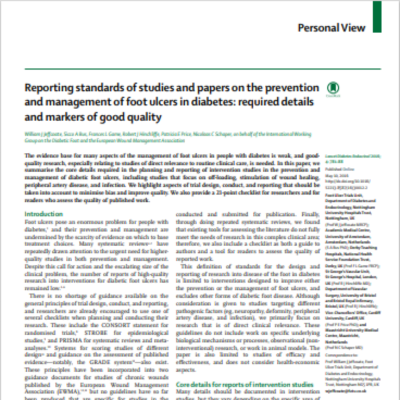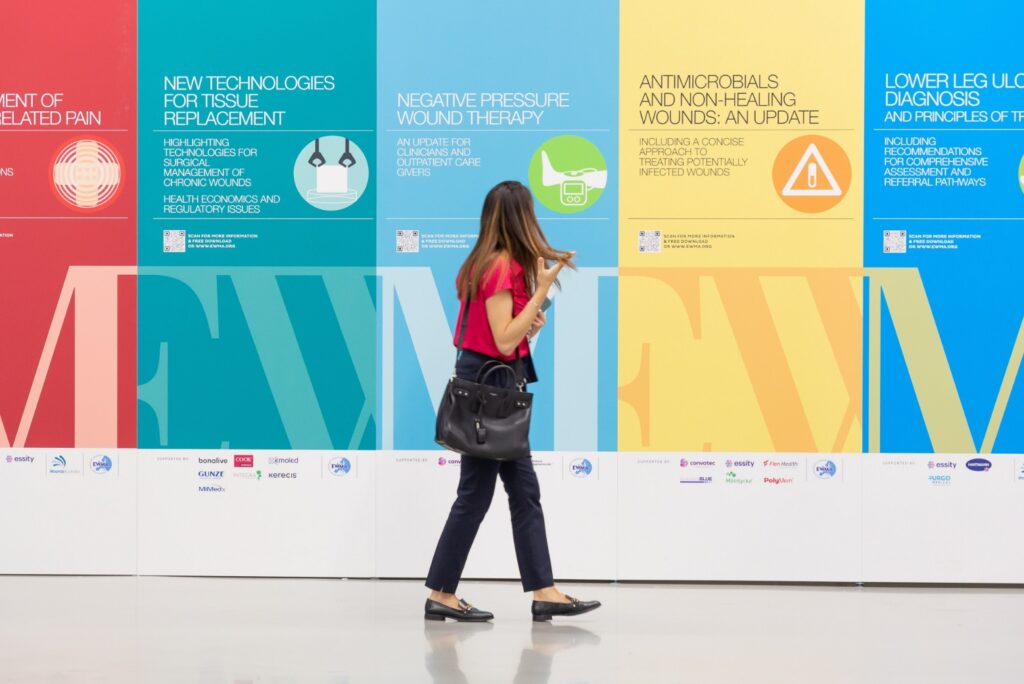In this episode of the EWMA podcasts, Julie Jordan O’Brien and David Armstrong discuss current challenges and opportunities in the management and prevention of diabetic foot ulcers. Jordan O’Brien is a former EWMA Council member who works as an advanced nurse practitioner in plastic surgery at Beaumont Hospital, in Ireland. Armstrong is Professor of Surgery and Director of the Southwestern Academic Limb Salvage Alliance (SALSA) at the Keck School of Medicine at the University of Southern California.
a) Preventing diabetic foot ulcers
‘Knock Your Socks Off’ implies that people with diabetes should be encouraged to take their socks off and have their feet examined when they visit a doctor or nurse. A foot examination can be done in just 3 minutes, and it can help detect major risks at an early stage.
Read more: How to do a 3-minutes diabetic foot exam (Miller et al, 2014).
A multidisciplinary approach to managing diabetic foot is critically important. In this way, patients can more easily navigate the system and get better care in one place.
The ‘toe and flow’ model entails close collaboration between podiatric and vascular surgery. Many studies have shown that this minimises the number of amputations, reduces the lengths of hospital stays and helps avoid re-admissions (Lee & Bevilacqua, 2010).
Moreover, Armstrong refers to the EWMA 2019 conference session ‘Toe and Flow in the Know: Meet the Professors’. The speakers at the session were Armstrong and Joseph Mills.
c) Technology & Patient Empowement
Armstrong is talking about the role of technology in improving patient adherence and empowering them to take control of their feet. He also refers to the EWMA 2019 conference session that he chaired, ‘Diabetic Foot Ulcers and Rehabilitation Following Amputation’. In that session, he spoke about technological advances in wound management.
d) DF Patient – Quality of Life
Diabetic foot patients have a high risk for psychological distress, and their condition has a big impact on their quality of life. Armstrong mentions Loretta Vileikyte’s research related to the psychological aspects of diabetic foot. You can have a look at some of Dr. Vileikyte’s publications in the references.
e) Person-centred care
Jordan O’Brien refers to the theme of the EWMA 2019 Conference, ‘Person-centred Wound Care. Who is in Charge of the Wound?’ She and Armstrong emphasise the importance of person-centred care when managing diabetic foot.
Julie Jordan O’Brien
speaker: David G. Armstrong

Join more than 30,000 international colleagues!

European Wound Management Association
© All Rights Reserved 2025